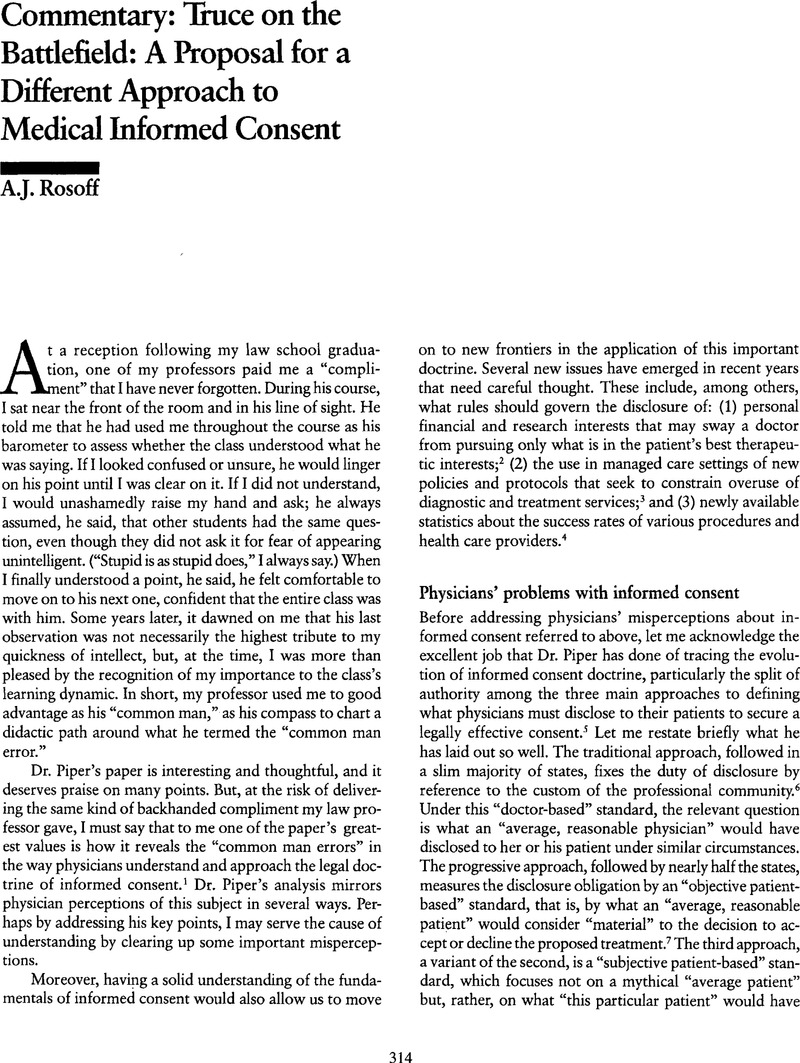See, for example,
Hall, Mark A.,
“Informed Consent to Rationing Decisions,” Milbank Quarterly,
71, no.
4 (
1993):
645–68; and its responses and counter-responses:
Appelbaum, Paul S., “Must We Forgo Informed Consent to Control Health Care Costs? A Response to Mark Hall,”
Milbank Quarterly, 71, no. 4 (1993): 669-76
Mechanic, David, “Trust and Informed Consent to Rationing,”
Milbank Quarterly, 72, no. 2 (1994): 217-23; and
Hall, Mark A., “Disclosing Rationing Decisions: A Reply to Paul S. Appelbaum,”
Milbank Quarterly, 72, no. 2 (1994): 211-15.
CrossRefGoogle Scholar